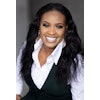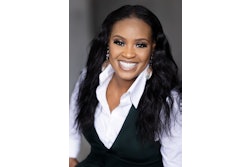Duke University Sociologist Examines
Intra-Racial Interaction in Black Community
NEW YORK
As an active member of his Brooklyn community, Roy Hastick takes plenty of inspiration from Martin Luther King Jr. and his dream of racial peace.
Hastick, originally from Grenada, carries that vision today, but it’s more complicated now than 40 years ago when it was a case of Black and White. Today, Blacks born in America, Africa and the Caribbean — often viewed as a single entity by outsiders — reflect contrasting cultures that transcend their common skin color.
“It is important for leaders to continue the legacy of Dr. King,” Hastick says. “I feel what he did was bring Blacks and Whites together. We as Caribbean-Americans have to reach out to African-Americans. We can learn from each other.”
That intra-racial interaction was rarely mentioned by King and others in the Civil Rights era of the 1960s. Although the differences existed then, the racial dialogue was framed starkly in terms of Black and White, says Dr. Eduardo Bonilla-Silva, a sociologist at Duke University. Immigrants from Africa or the Caribbean were simply categorized by racial group rather than ethnicity.
But that’s changed in the decades since then, Bonilla-Silva says. “There has been a reorganization of ‘Black.’ There is a space that wasn’t there 40 years ago.”
Dr. Frank E. Dobson has observed the evolution on the campus of Vanderbilt University in Nashville, where he is executive director of the Bishop Joseph Johnson Black Cultural Center. While the African-American student group has been around for years, it was joined in recent years by a Caribbean students’ group and an African students’ organization.
The problem now is getting those groups to speak with one another, Dobson says — a concern shared in the larger society as well.
“It is a problem in our community,” he says. “There’s not the dialogue that there needs to be.”
Christian Gibbs, a former Brooklynite now living in Houston, remembers a childhood where he was routinely insulted as a “coconut” because his parents were Guyanese. “You got teased, you got harassed for your accent,” he says.
André Padgett saw the other side growing up in a Queens neighborhood that became heavily Caribbean, people thought he and his American Black family were from the islands as well. The “assumption was that an African-American family couldn’t afford to buy a house there,” he says.
During the recent New York City transit strike, a Black radio show personality mocked the immigration status of the Black president of the union — and called the native Trinidadian a “coconut.”
The DJ’s comments sparked some anger within the city’s Caribbean community. Author Playthell Benjamin, writing in an opinion piece in the Daily News, noted “it was a performance that could well aggravate the already troubled relations between the African-American and Caribbean communities.”
Regardless of how these groups feel about each other, they are still largely considered by the outside world to be one and the same. “You can call yourself whatever, but the streets of America will give you lessons about how you’re perceived,” Bonilla-Silva says.
That knowledge should inspire cooperation since they all face the same issues here, says Richard Green, executive director of the Crown Heights Youth Collective. “It’s not where the ship dropped you, it’s where we are now.”
— Associated Press
© Copyright 2005 by DiverseEducation.com


















